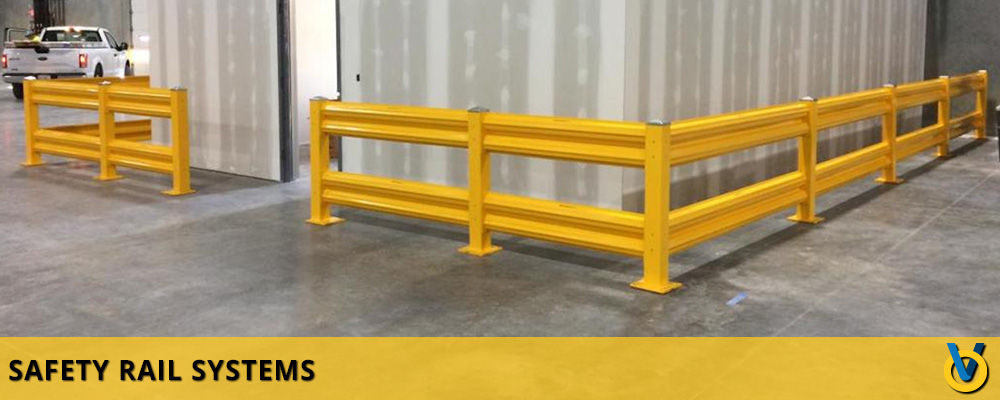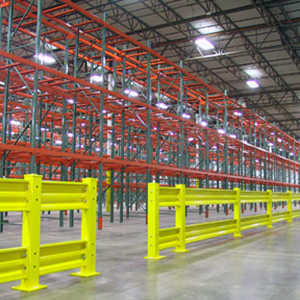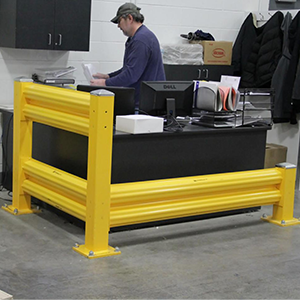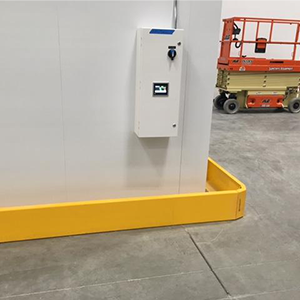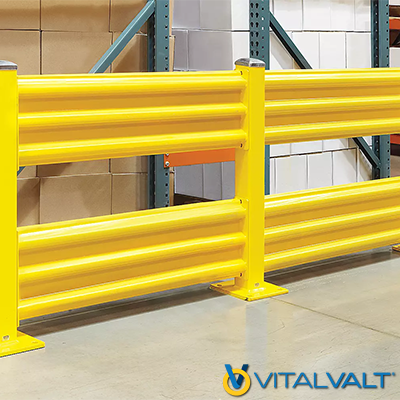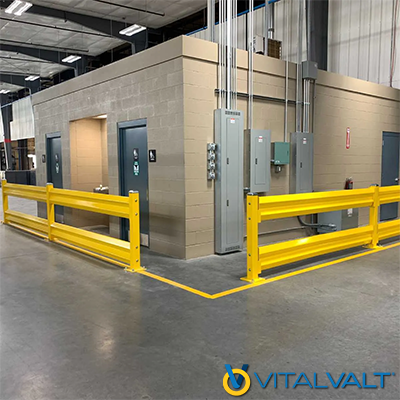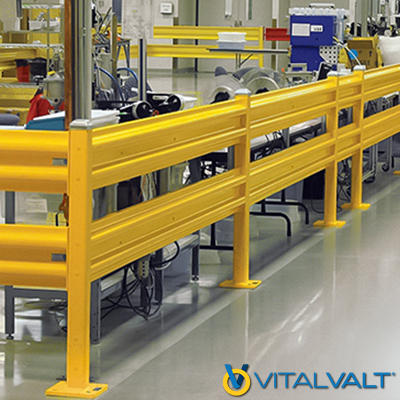Safety Rail Systems provide a physical and visual barrier in the workplace. It is used to guard a variety of areas throughout your building. The goal of any facility is to be safe and avoid accidents. By adding guard rails to designated areas – you will be equipped with safety standards and insurance should an accident occur.
As a company, your building, employees, equipment, and physical inventory represent the majority of your assets. An economical way to protect all three is to place protective guard rail systems in traffic areas.
In a warehouse forklift damage is the most common type of damage, which generally results in loss of expensive equipment and employee injuries. This happens typically because the pallet racking systems cannot withstand the heavy impact of a forklift. Using guard rail systems and floor-mounted protectors will maximize the protection of your warehouse.
It used to be that safety rail systems always meant rigid steel, but in recent years, other options have emerged. The two dominant types are traditional, rigid steel railing and newer flexible systems.
STEEL: The primary components of steel guard rail are the square tube steel posts, base plates, and steel rails. Impact resistance relies on the thickness of the steel, the number of posts and the general layout of the railing.
FLEXIBLE POLY GUARD: If a section of guard rail is always being impacted, it’s a great candidate for flexible systems, which deform on impact, then flex back, and don’t require replacement components as frequently
Depending on what type of equipment is used and/or the level of protection you require, Vital Valt can help you find the product right for you. We’ll help you plan layouts and provide you with specs and cost comparisons to help you determine the type of rail that works best for you. Contact us now for more information.


